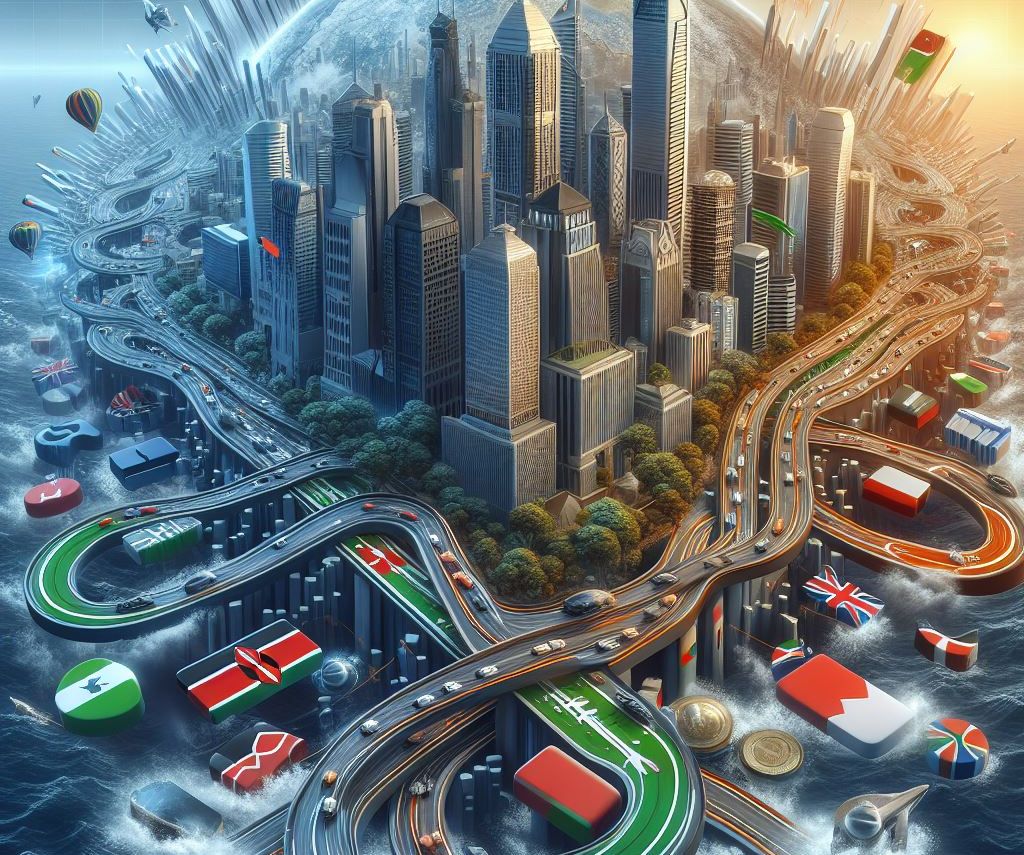In this guide, we’ll explore how to capture the essence of your travels and make every moment unforgettable.
Travel photography is like a magical time machine. With every click of your camera, you capture a moment that will forever remind you of the places you’ve been and the adventures you’ve had. Whether you’re wandering through ancient streets, exploring breathtaking landscapes, or simply enjoying a new city, knowing how to take great photos can make your travel memories even more special. In this guide, we’ll explore how to capture the essence of your travels and make every moment unforgettable.
Reasons Why Travel Photography Matters
Travel photography isn’t just about taking pretty pictures; it’s about preserving memories and sharing your experiences. A well-taken photo can transport you back to a moment, bringing back the sights, sounds, and feelings of your trip. It helps you remember the details you might forget over time and allows you to share your adventures with friends, family, and even the world. Here are five reasons why travel photography is so important:
- Preserves Memories
A great photo captures a specific moment in time, helping you remember your travels even years later. When you look at a photo, you can recall the sights, sounds, and emotions you experienced. This ability to preserve memories is one of the most valuable aspects of travel photography.
- Share your Experiences
Travel photography allows you to share your adventures with others. Whether it’s through social media, blogs, or photo albums, sharing your photos helps others see the world through your eyes. It’s a way to bring a piece of your journey to friends and family who might not have the chance to visit the same places.
- Inspires Others
Amazing travel photos can inspire others to explore new destinations and try new experiences. When people see your captivating images, they might feel motivated to embark on their own adventures. Good travel photography can spark curiosity and encourage others to discover new places.
- Captures the Unique Aspects of Each Destination
Every destination has its own unique features, from landscapes and architecture to local culture and cuisine. Travel photography helps capture these distinctive elements, showcasing what makes each place special. By highlighting the unique aspects of a destination, your photos can tell a story about the places you visit.
- Creates Lasting Keepsakes
Photos are lasting keepsakes that you can look back on for years to come. They serve as visual reminders of your travels and can be cherished memories for yourself and others. Creating photo books, albums, or even framed prints can turn your travel photos into treasured mementos.
Getting Started with Travel Photography
1. Choose the Right Equipment
You don’t need the most expensive camera to take great travel photos. Many smartphones have high-quality cameras that can capture stunning images. However, if you have a dedicated camera, such as a DSLR or mirrorless camera, you’ll have more control over your shots.
Here are a few things to consider:
- Camera:
If you’re using a smartphone, make sure it has a good camera with high resolution. For dedicated cameras, a DSLR or mirrorless camera with interchangeable lenses can be very versatile.
- Lenses:
If you’re using a dedicated camera, having a few lenses can help. A wide-angle lens is great for landscapes and architecture, while a zoom lens is useful for capturing distant subjects.
- Tripod:
A tripod can help you take steady shots, especially in low light or when taking long exposures.
- Extra Batteries and Memory Cards:
Make sure to bring extra batteries and memory cards, so you don’t run out of power or storage during your adventures.
2. Learn Basic Photography Techniques
Understanding some basic photography techniques can make a big difference in the quality of your photos. Here are a few key concepts to get you started:
- Exposure:
This refers to how light or dark your photo appears. You can adjust the exposure by changing the aperture (the size of the lens opening), shutter speed (how long the camera’s shutter stays open), and ISO (the camera’s sensitivity to light).
- Composition:
Composition is how you arrange elements in your photo. Good composition can make your photos more interesting and visually appealing. The rule of thirds is a simple guideline that suggests dividing your image into nine equal parts and placing important elements along these lines or at their intersections.
- Focus:
Ensure your subject is in focus. Use your camera’s autofocus feature or manually adjust the focus to make sure your main subject stands out clearly.
3. Capture the Essence of Your Destination
When you’re traveling, try to capture the essence of each place you visit. This means photographing the things that make a destination unique. Here’s how to do it:
- Landscapes:
Take wide shots of beautiful landscapes, such as mountains, beaches, or cityscapes. Try to capture the scale and grandeur of the scene.
- Architecture:
Photograph interesting buildings, monuments, and landmarks. Pay attention to details like unique architectural features or historical significance.
- Local Life:
Capture people going about their daily lives. This can include market scenes, local festivals, or street performers. Be respectful and ask for permission if necessary.
- Food:
Don’t forget to photograph the delicious food you try. Food photos can be mouthwatering and give viewers a taste of local cuisine.
Tips for Great Travel Photography
- Take Your Time
Don’t rush your shots. Take your time to find the right angles and composition. Walk around your subject, try different perspectives, and wait for the perfect light. Sometimes, the best photos come from taking a moment to observe and appreciate your surroundings.
- Use Natural Light
Natural light often creates the most flattering and vibrant photos. Early morning and late afternoon light, known as the “golden hour,” is particularly beautiful. Avoid shooting in harsh midday sunlight, which can create unflattering shadows and bright highlights.
- Pay Attention to Details
Details can make your photos stand out. Look for interesting textures, patterns, and colors. For example, you might capture the intricate details of a local market stall or the unique design of a traditional building.
- Experiment with Different Angles
Don’t be afraid to try different angles and perspectives. Shoot from low angles to make subjects appear more dramatic, or from high angles to capture a broader view. Experimenting with angles can add variety and creativity to your photos.
- Capture Candid Moments
Candid shots can be some of the most compelling and authentic. Instead of staging photos, try to capture spontaneous moments and genuine expressions. These photos often tell a more interesting story and convey the true spirit of your travels.
- Edit Your Photos
Editing can enhance your photos and bring out their best qualities. Use photo editing software or apps to adjust exposure, contrast, and colors. Be careful not to over-edit; the goal is to enhance your photos while keeping them natural and true to the moment.
Common Travel Photography Challenges
- Unpredictable Weather
Weather can be unpredictable, and sometimes you might face challenging conditions like rain, fog, or strong sunlight. Embrace these conditions and use them to your advantage. For example, rainy weather can create reflections and dramatic skies, while fog can add a mysterious atmosphere to your photos. Adjust your camera settings and use protective gear for your equipment to capture the best results despite the weather.
- Crowded Places
Popular tourist spots can be crowded, which might make it difficult to get a clear shot without people in the frame. Be patient and wait for moments when the crowd thins out. You can also explore alternative angles or locations to capture the scene without the distraction of large groups. Using a wide-angle lens can help you include more of the scene and reduce the impact of crowds.
- Low Light Conditions
Low-light situations, such as in dimly lit rooms or at night, can be challenging for photography. Increase your camera’s ISO setting to capture more light, but be cautious not to raise it too high to avoid grainy images. Using a tripod can help keep your camera steady during long exposures, and looking for available light sources can brighten your photos and add interesting effects.
- Language Barriers
Traveling to a country where you don’t speak the language can make it hard to communicate, especially if you want to ask permission to take photos. Learn a few key phrases in the local language to make communication easier. Use gestures to ask for permission and carry a translation app to help with understanding and interacting with locals.
- Changing Conditions
Travel often means moving from one place to another, and conditions can change quickly. One moment you might be in a bustling city, and the next, you could be in a serene countryside. Be flexible and ready to adjust your photography techniques based on your surroundings. Keep your camera gear accessible so you can capture moments as conditions change, and practice adapting to different environments.
- Equipment Limitations
Sometimes, your camera equipment might have limitations, such as a lack of zoom capability or low battery life. Work with what you have by finding creative solutions to capture your shots. For example, if you lack a zoom lens, get closer to your subject or use cropping in post-processing. Carry extra batteries and memory cards to avoid running out of power or storage during crucial moments.
Showcasing Your Travel Photos
Once you’ve captured your amazing travel photos, it’s time to share them with others. Here are a few ways to showcase your work:
- Social Media
Platforms like Instagram, Facebook, and Pinterest are great for sharing your travel photos with friends and followers. Use hashtags and geotags to reach a wider audience and connect with others who share your interests.
- Photo Books
Create a photo book to preserve your travel memories. You can print and design a book with your favorite photos and add captions or stories about your adventures.
- Blogs and Websites
If you enjoy writing, consider starting a travel blog or website to share your photos and experiences. You can write about your travels, offer tips, and showcase your best images.
- Galleries and Exhibitions
If you’re passionate about photography, you might consider displaying your work in local galleries or exhibitions. This can be a great way to share your photos with a wider audience and gain recognition for your work.
Conclusion
Travel photography is a wonderful way to capture and share your adventures. By understanding basic photography techniques, choosing the right equipment, and embracing the unique aspects of each destination, you can create stunning photos that preserve your memories and inspire others. Remember to take your time, experiment with different angles, and pay attention to details. With practice and creativity, you’ll be able to capture the essence of your travels and create beautiful keepsakes of your adventures.
So, the next time you embark on a new journey, don’t forget to bring your camera along and capture the magic of your travels. Your photos will be a lasting reminder of the incredible experiences and places you’ve encountered, and they’ll allow you to relive those moments for years to come. Happy photographing!


























